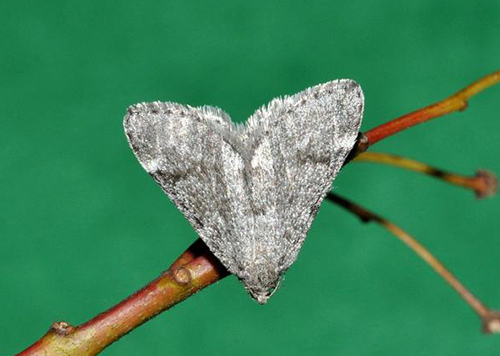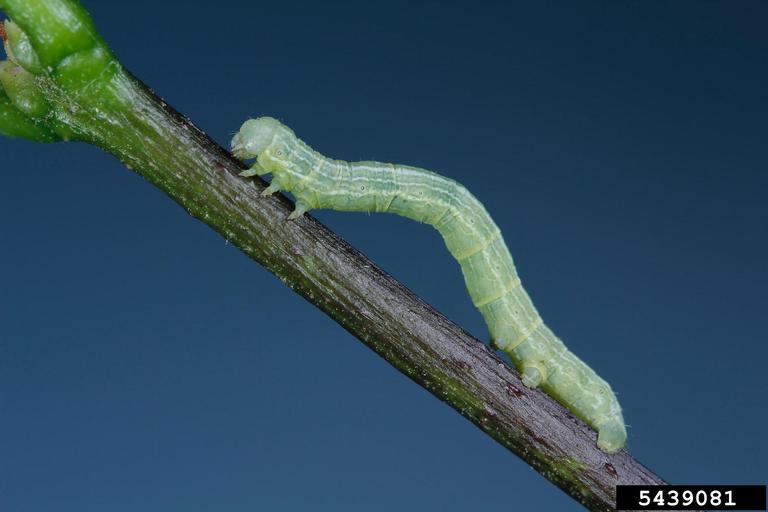Integrated Pest Management
Cankerworms
Alsophila pometaria (Fall Cankerworm); Paleacrita vernata (Spring Cankerworm)
Pest Description
- adult males: 1 1⁄8 inches long; dull gray brown
- adult females: 5/16 inch long; dull gray brown; wingless
- larvae: ~ 1 inch long; green to light brown to black; inchworms that crawl by arching their backs
- fall cankerworm larvae: three pairs of prolegs and three white stripes on either side of the abdomen
- spring cankerworm larvae: two pairs of prolegs and one larger white stripe down each side of the abdomen
- eggs: barrel shaped, shiny gray with a light brown ring around a dark brown spot; laid in clusters
Host Plants, Diet & Damage
- feed on leaves of apple, ash, red and white oak, maple (including boxelder), elm, cherry, linden and honeylocust
- tattered skeletonizing (leaving veins) or total defoliation
- can stress trees or kill trees over years of defoliation
Biology, Life Cycle & Damaging Life Stage
- overwinter as eggs on host (fall cankerworm) or pupae in soil (spring cankerworm)
- eggs hatch in early spring around budbreak
- fall cankerworm and spring cankerworm larvae feed at the same time
- fall cankerworm adults emerge after a hard freeze in fall; spring cankerworm adults emerge in early spring
- wingless females climb trees to mate with winged males
- larvae can be blown from tree to tree on silken threads
- one generation per year
- larvae are the damaging stage
IPM Recommendations
- Manage trees to maintain overall health.
- Monitor trees in early spring for egg masses and larvae.
- If populations are low, allow minor feeding on trees.
- Apply an insecticide (Bacillus thuringiensis; carbamate; pyrethroid) to target larvae when they are smaller than 1/2 inch (~10 days after egg hatch).
For more information, see our Cankerworms fact sheet.





